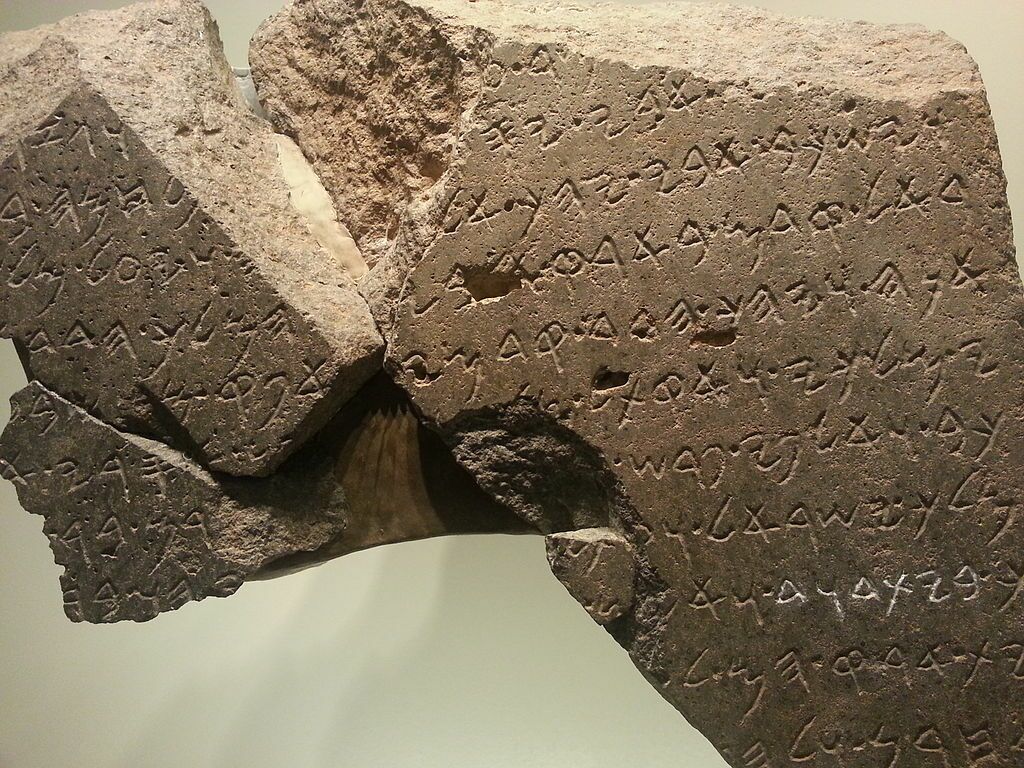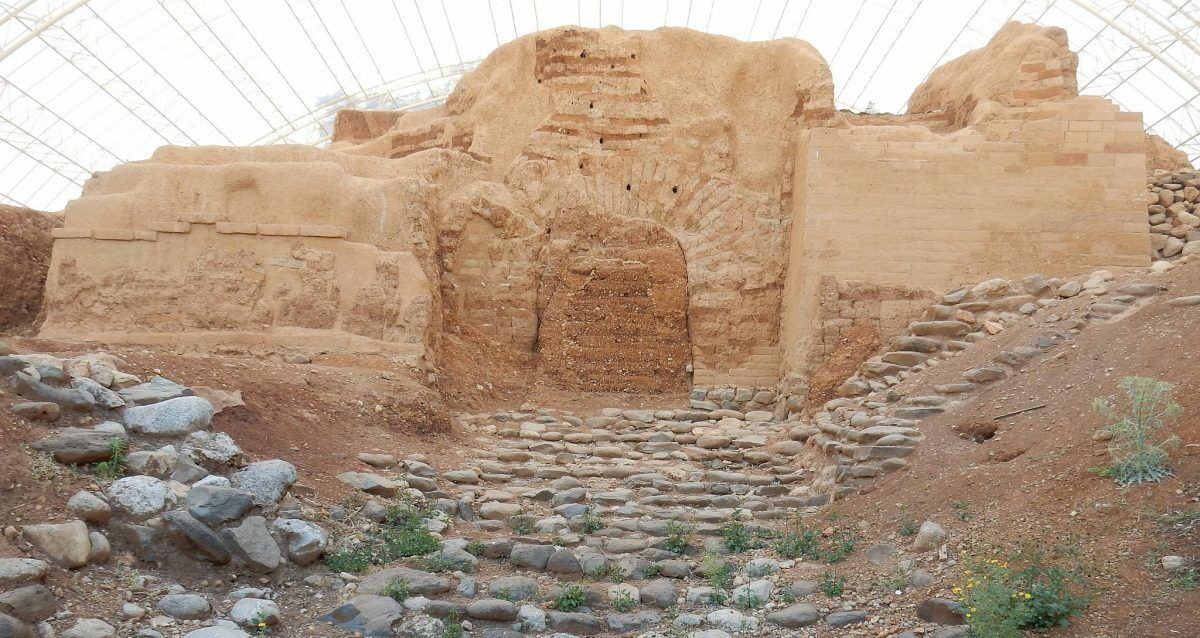Yesterday, I visited the Tel Dan Nature Reserve in northern Israel. It’s a beautiful park, featuring trails winding through lush greenery and numerous footbridges spanning dozens of streams that seem to flow in every direction. The network of streams empties into the gushing Dan River—the largest and most important source of the Jordan River.
Nestled in the midst of the sprawling vegetation are the excavated ruins of the ancient Israelite city of Dan—the most important city in the northern part of the ancient kingdom of Israel, according to some historians.
The Bible tells us this city was originally known as Laish, before the people of Dan, known for naming places after the name of their father, captured the city during the period of Israelite judges. Thus, the city of Dan was to become one of the first examples of many self-identifying places named by the people of Dan—the tribe prophesied to leave behind a “serpent’s trail” (Genesis 49:17, King James Version; see also Judges 18:12, 29).
A couple of well-preserved structures from the earliest days of the Israelite kingdom still stand at the excavation site, including a city gate complex and a long section of the wall of the old city. According to the Israeli Ministry of Foreign Affairs, the well-preserved inner gate can be considered a typical example of what Israelite city gates looked like during biblical times.

Then there is the cultic precinct, or “high place” of Dan, where Jeroboam built a pagan temple around a golden calf. After Solomon’s death, as God had prophesied, the kingdom of Israel was rent in two. In response to the heavy taxes imposed by King Rehoboam, the 10 northern tribes of Israel left the kingdom in protest and selected Jeroboam to be their king.
The contentious division nearly caused a full-scale civil war between the north and south, but God intervened to stop the Israelite people from self-destructing.
After the dust settled from the bitter separation, Jeroboam reasoned in his heart that if he didn’t fundamentally alter Israel’s system of religious worship, the northern tribes would continue looking to Jerusalem and eventually switch their allegiance back to Rehoboam. So Jeroboam made two golden calves—golden calves, of all things!—and he placed one in Bethel and the other in Dan—within the temple precinct that has since been excavated.
“And this thing became a sin: for the people went to worship before the one, even unto Dan. And he made an house of high places, and made priests of the lowest of the people, which were not of the sons of Levi” (1 Kings 12:30-31; kjv).
Jeroboam convinced the people to go along with this rebellious form of religious worship by telling them that there was a much easier way to observe God’s commands. He was like many preachers you hear today—those who speak “smooth things” to their congregants.
Jeroboam also dissolved the Levitical priesthood and instead “made priests of the lowest of the people” (verse 31), upending the priesthood in an attempt to maintain control over religion and thus the masses. This decision effectively sent the tribe of Levi packing; they ran back to Judah in hopes of retaining their prominent status.
“And Jeroboam ordained a feast in the eighth month, on the fifteenth day of the month, like unto the feast that is in Judah, and he went up unto the altar; so did he in Beth-el, to sacrifice unto the calves that he had made; and he placed in Beth-el the priests of the high places that he had made. And he went up unto the altar which he had made in Beth-el on the fifteenth day in the eighth month, even in the month which he had devised of his own heart; and he ordained a feast for the children of Israel, and went up unto the altar, to offer” (verses 32-33). Again, note how similar this is to the way human nature reasons today. Jeroboam took a religious-sounding festival and made it into something he thought would work better.
But even if it has the exact same name and includes all of the same forms of worship, if it is not observed at the time God designates or carried out the way He commands, it’s certainly not God’s festival!
This was Jeroboam’s religion through and through. And Israel simply followed right along after this pagan form of worship—within less than two generations after King David! God sent one prophet after another to plead with Israel to return to the true God. But these God-fearing men were despised and rejected.
Notice Judges 18:30: “And the children of Dan set up for themselves the graven image; and Jonathan, the son of Gershom, the son of Manasseh, he and his sons were priests to the tribe of the Danites until the day of the captivity of the land.” The tribe of Dan, in other words, along with the other northern tribes, went into captivity first—a full 120 years ahead of Judah.
According to Archaeology of the Land of the Bible, Volume 2, the city of Dan flourished until the late Iron Age, when Galilee and the northern coastal regions became the first areas to be conquered by the Assyrians. The Assyrians, under Tiglath-Pileser iii, destroyed Dan and a new city was later constructed over it. Assyrian pottery vessels and statues, in addition to Phoenician chapels and settlements from the Persian period, have also been uncovered in Tel Dan. Unsurprisingly, the name of the pagan god “Ba’al” appears in a few of the finds from Dan.

As an interesting aside, we’ve written before about the most famous discovery made at the Tel Dan site. It’s a ninth-century b.c.e. stone tablet bearing a clear reference to the “house of David” and “king of Israel.” The author of the inscription, a Gentile king, boasts of having defeated both the king of Israel and the king of Judah—the latter monarch being a descendant of the “house of David.” Even Israel Finkelstein and Neil Asher Silberstein—two notable skeptics, when it comes to archaeological discoveries that confirm the biblical record—could not ignore the significance of the Tel Dan tablet. They wrote in 2001, “Thus, the house of David was known throughout the region; this clearly validates the biblical description of a figure named David becoming the founder of the dynasty of Judahite kings in Jerusalem.”
It certainly does validate the biblical description of the Davidic dynasty and its founder. But after seeing the other excavated remains at the Tel Dan site during our tour yesterday—the pagan temple precincts and the large stone gateway, as well as the new city structures the Assyrians built on top of a defeated Israelite city—I couldn’t help but think about how those excavated ruins also validate the many sobering warnings delivered by the prophets of old, who constantly warned Israel to return back to God’s laws and festivals so they wouldn’t be overrun by enemy empires and then carted off into captivity.
